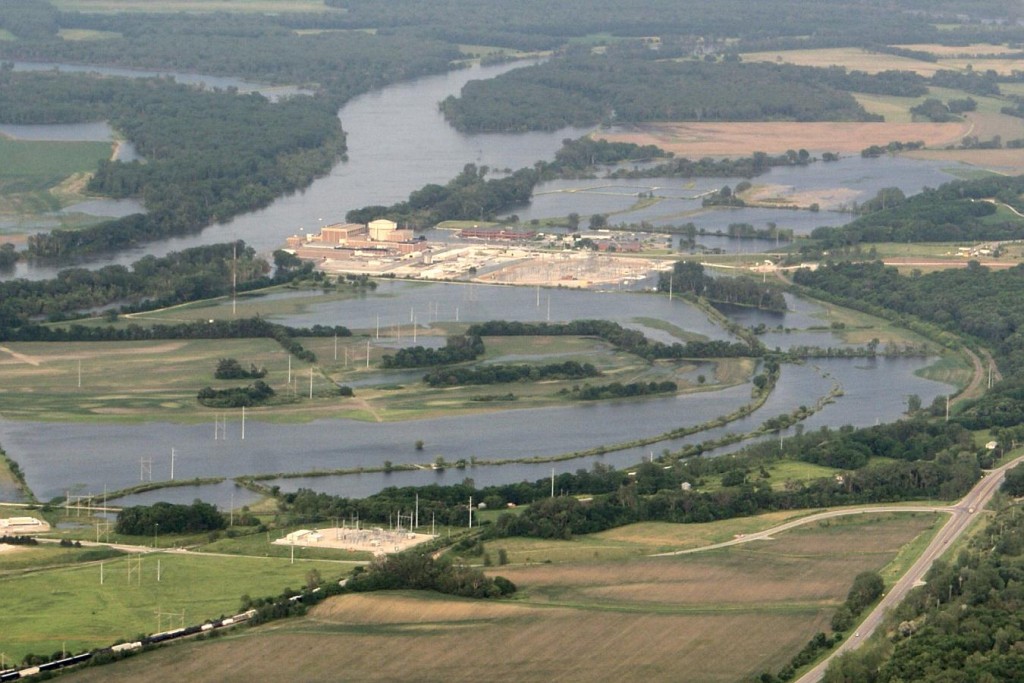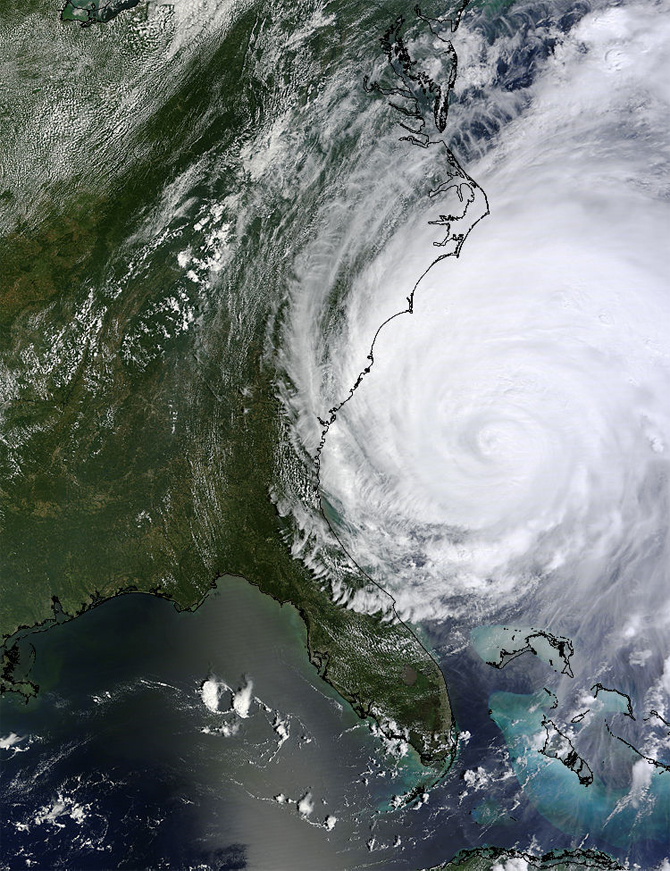Tweet ![]() While it ain’t over till it’s over, 2011 is over. A lot that could have happened, didn’t. Obama didn’t resign, Donald Trump didn’t throw his hat into the ring or divorce his current wife and marry one or more Kardashians. Newt Gingrich threw his hat into the ring, but also didn’t divorce his current wife and marry one or more Kardashians. These are the most significant events of 2011.
While it ain’t over till it’s over, 2011 is over. A lot that could have happened, didn’t. Obama didn’t resign, Donald Trump didn’t throw his hat into the ring or divorce his current wife and marry one or more Kardashians. Newt Gingrich threw his hat into the ring, but also didn’t divorce his current wife and marry one or more Kardashians. These are the most significant events of 2011.
- Japan, March, 2011 . Nebraska, June, 2011. An earthquake triggered a tsunami which slammed Japan with a 30 foot wave, which shut down twelve nuclear reactors at three sites, triggering melt-downs in three reactors at the Fukushima Dai-ichi site. We now see radioactive particles in food and soil in Fukushima Prefecture. The United States government recommended an evacuation of a 50 mile radius from the plant – this is a semi-circular no-man’s land of 3,927 square miles. It would be 7,854 square miles but the plant was on the coast and therefore half of this radioactive no-man’s land is in the Pacific Ocean. The environmental ramifications of radioactive materials spreading over Japan and flowing into the Pacific Ocean are not known (Popular Logistics click here, here, here), however, liabilities to TEPCO and Japan are estimated to $100 Billion (click here). In the United States, two nuclear power plants on the Missouri River, the Fort Calhoun and Cooper plants, were shut-down when the Missouri River flooded (Popular Logistics, here).
 Eight nuclear power plants from South Carolina to Connecticut were shut down in the aftermath of the earthquake that struck with an epicenter in Virginia August 23, 2011, and Hurricane Irene a few days later (Popular Logistics, here). In the words of Mycle Schneider, describing the World Watch Institute report he authored, “The industry was arguably on life support before Fukushima. When the history of this industry is written, Fukushima is likely to introduce its final chapter,” (click here). However, the three melt-downs at Fukushima, coupled with the melt-down at Chernobyl in 1986 and the partial melt-down at Three Mile Island in 1979, suggest a probability of one melt-down every 14 years.
Eight nuclear power plants from South Carolina to Connecticut were shut down in the aftermath of the earthquake that struck with an epicenter in Virginia August 23, 2011, and Hurricane Irene a few days later (Popular Logistics, here). In the words of Mycle Schneider, describing the World Watch Institute report he authored, “The industry was arguably on life support before Fukushima. When the history of this industry is written, Fukushima is likely to introduce its final chapter,” (click here). However, the three melt-downs at Fukushima, coupled with the melt-down at Chernobyl in 1986 and the partial melt-down at Three Mile Island in 1979, suggest a probability of one melt-down every 14 years. - South Carolina, North Carolina, Virginia, Maryland, Delaware, New Jersey, Pennsylvania, New York, Connecticut, Massachusetts, and Vermont, August, 2011. Hurricane Irene covered an area of approximately 170,000 square miles, or about the size of California.”

- Washington, DC, December. 2011. After 4,000 Americans were killed, about 50,000 were wounded, and $1 trillion was spent over 8 years, President Obama ended the American mission in Iraq that Congress authorized in October, 2002, President Bush started in March, 2003 and declared “Accomplished” in May, 2003 (for a timeline, click here).
- Washington DC, Abbottabod, Pakistan, May, 2011, American soldiers, on orders from the White House, found and killed Osama bin Laden in a compound in Pakistan (NY Times, click here).
- Yemen, In summer, 2011, American military forces, using a drone aircraft piloted from the ground via remote control, from the ground, targeted and killed Anwar al Awlaki, an American born Al Queda operative in Yemen (NY Times, click here).
- The hacking group “Anonymous” broke into the computers of the security consulting group “Stratfor” and found 44,188 Encrypted Passwords, of which roughly 50% could be easily cracked. 73.7% of decrypted passwords were weak” (NPR, click here).
- The “Stuxnet” computer worm virus, harmelss on PC’s runing MS Windows, Mac OS X, and Linux, and other computers, appears to have targeted centrifuges used in the Iranian uranium enrichment facilities. While the viruses were discovered in 2010, they became understood in 2011. The virus caused the centrifuges to spin out of control, wrecking themselves (NY Times, here, NPR here, CNET here, Wikipedia here).
- The Arab Spring Tahrir Square and the almost peaceful revolt in Egypt, the bloody revolt in Libya and the strife in Syria that threatens, or promises, to topple Bashir al Assad.
- The Demonstrations against the Keystone XL Pipeline outside the White House, which may lead the President to veto the pipeline.
- Occupy Wall Street changed the dynamic of the economic argument in the United States. While the media seemed to ignore the protests at first, slowly, inexorably, the media started questioning the wealth of the 1% richest Americans and the transfer of wealth from the 99% to the 1%. Popular Logistics began its coverage with Protesting Marked Cards and a Stacked Deck, on 9/22/11, here. As President Obama said, in the 2012 State of the Union, here, transcript here, “you can call this class warfare all you want. But asking a billionaire to pay at least as much as his secretary in taxes? Most Americans would call that common sense. … We don’t begrudge financial success in this country. We admire it. When Americans talk about folks like me paying my fair share of taxes, it’s not because they envy the rich. It’s because they understand that when I get a tax break I don’t need and the country can’t afford, it either adds to the deficit, or somebody else has to make up the difference — like a senior on a fixed income, or a student trying to get through school, or a family trying to make ends meet. That’s not right. Americans know that’s not right. They know that this generation’s success is only possible because past generations felt a responsibility to each other, and to the future of their country, and they know our way of life will only endure if we feel that same sense of shared responsibility. That’s how we’ll reduce our deficit. That’s an America built to last. “
- The Republican Congress lost a game of chicken in the July, and another in December, and extended Obama’s tax holiday to 154 million workers a pay cut of 2% of the first $108,000 for the first two months of 2012.
- The Dow Jones plummeting in July on fears of a US government default, but ignoredit politics in December.
- Fiscal chaos in southern Europe, in Greece, Spain, and Italy, threatens to destabilize the Eurozone.
- Sale of LED lightbulbs bulbs for general home and industrial use at Costco, Home Depot, Lowes, and WalMart. These bulbs are expensive, but like PV Solar modules subject to economic forces like “Moore’s Law.” The price will drop as engineering and manufacturing improves, and as more people buy them. The units should last 10 or 20 years. They are instantly on; there is no warm-up time, are fully – and incredibly – dimmable, produce a very bright and beautiful light, do not contain methyl mercury, and use half the power, and produce half the heat, of a compact fluorescent and about 15% to 25% of the power, and with very little of the heat generated by an incandescent bulb. I wrote about my observations in LED Lamps – The Paradigm is Shifting, on 12/23/11, here. Republicans in Congress overturned the ban on incandescents, here, but the handwriting is on the wall.
- Very quiet development of the “Public Option” in health care in California. See County-Run Health Plans Seek To Expand In California, here, and “California Group looking to put public option on the ballot,” here and here.
- On May 27, 2011, NJ Governor Chris Christie pulled the state from the Regional Greenhouse Gas Initiative (RGGI), the only mandatory cap-and-trade program in the U.S., while promising to ban new coal-fired plants in the state. see Environmental Leader, New Jersey Quits RGGI, Bans Coal Plants, here.
- Continued development of wind and solar energy in California, Colorado, Florida, Iowa, NJ, Texas, Vermont.
- When Exelon’s management for the Oyster Creek nuclear plant whined that operating it safely would cost too much money; NJ Governor Chris Christie said, with his characteristic aplomb, “Operate it safely, or close it.” Oyster Creek, the oldest operating nuclear plant in the United States, and the world, will close in 2019. Gov. Christie knows that by 2015 New Jersey will have enough solar power capacity to replace Oyster Creeks generation capacity during the day. He also knows that by 2020 there will be enough offshore wind generating capacity to replace Oyster Creek and one or two of the Salem and Hope Creek reactors. See Courier Post Online: “Owner: Oyster Creek nuclear plant to close on time in 2019” here.
- The world lost a visionary in Steve Jobs, another visionary in Vaclav Havel, and a tyrant in Kim Jong Il.
- The world population surpassed 7 billion.
- Marlboro College graduated the second cohort of students with MBAs in Managing for Sustainability. The third cohort completed it’s academic work in December, 2011. This degree recognizes that people get things accomplished via the model of business, but businesses ought be managed with a long term view; that we must consider both the environmental ramifications of our actions, and the economic “externalities.” People are engaged in similar programs at the Presidio, Bainbridge, Antioch, Northwestern, Bard. (I am proud to say that I am a Marlboro Alum.)

